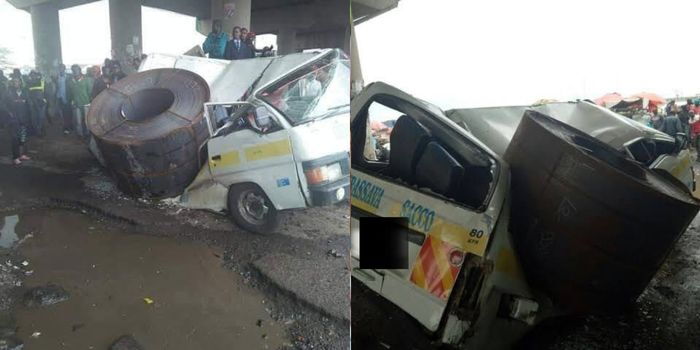The Three-Roll Steel limit revolutionizing Ugandan roads
Among these regulations is a strict rule that lorries should carry no more than three rolls of steel. But what prompted this specific limitation, and what are the reactions from the public and industry?

In recent years, Uganda has seen a growing emphasis on road safety regulations, especially concerning the transportation of heavy materials. This brought about the the three-roll steel limit.
Among these regulations is a strict rule that lorries should carry no more than three rolls of steel also known as the the three-roll steel limit. But what prompted this specific limitation, and what are the reactions from the public and industry?
The primary reason behind this regulation of the the three-roll steel limit is safety. Overloaded lorries have been a significant cause of road accidents in Uganda. Steel rolls, in particular, are extremely heavy and can make a vehicle unstable if not properly distributed.
By limiting the load to three rolls using the three-roll steel limit, the authorities aim to reduce the risk of accidents caused by overturning or brake failure.
“These steel rolls are incredibly heavy, and even a slight miscalculation can lead to disastrous results,” said John Mugisha, a traffic safety expert. “The three-roll steel limit ensures that the lorry’s weight is manageable and the chances of accidents are minimized.”
Uganda’s roads have long suffered from wear and tear due to heavy loads. Overloaded lorries contribute significantly to road damage, leading to costly repairs and dangerous driving conditions.
Limiting the number of steel rolls through the three-roll steel limit helps preserve road integrity, ultimately benefiting all road users.
“We’ve seen too many roads deteriorate rapidly because of heavy loads,” commented an engineer from the Ministry of Works and Transport who preferred anonymity. “This regulation helps us maintain our infrastructure and ensures safer journeys for everyone.”
The regulation of the three-roll steel limit has received mixed reactions from the industry. Some logistics companies and drivers appreciate the focus on safety, acknowledging the long-term benefits of fewer accidents and road repairs.
However, others are concerned about the economic impact, fearing reduced efficiency and higher transportation costs.
“We understand the safety aspect, but it does affect our operations,” said James Okello, a driver ploughing Nairobi – Kampala route. “Fewer rolls per trip mean more trips to meet demand, which increases fuel costs and delivery times.”
Public opinion about the the regulation is largely supportive of the regulation. Many Ugandans appreciate the government’s efforts to improve road safety and reduce accidents involving heavy vehicles.
“It’s about time we prioritize safety over profit,” said Anna Namirembe a mobile money attendant. “Our roads and our lives are worth more than a few extra rolls of steel.”
As Uganda continues to balance economic growth with safety and infrastructure maintenance, regulations like the three-roll limit for steel lorries highlight the challenges and solutions in achieving this balance.
While the debate continues, the priority remains clear: safeguarding the lives of Ugandan road users and preserving the nation’s roadways for future generations.
With increased awareness and adherence to these safety measures, the hope is that Uganda will see a significant reduction in road accidents, leading to safer and more efficient transportation for all.







